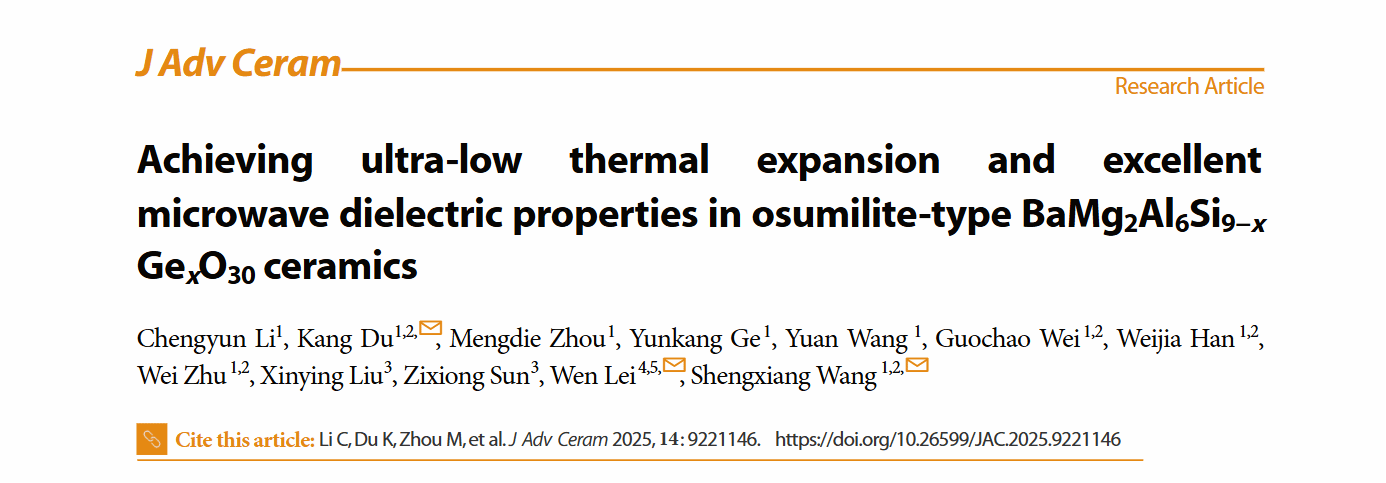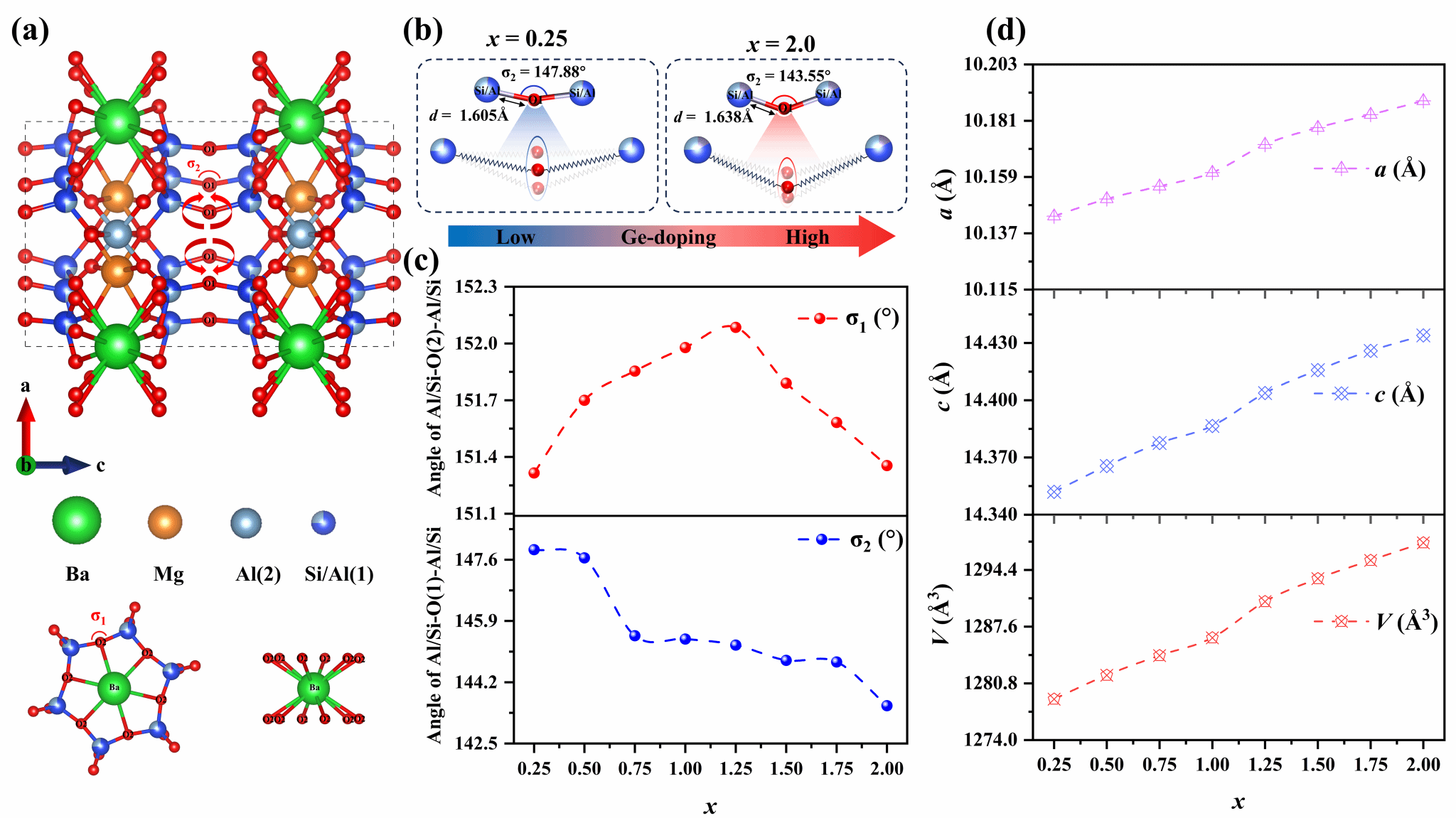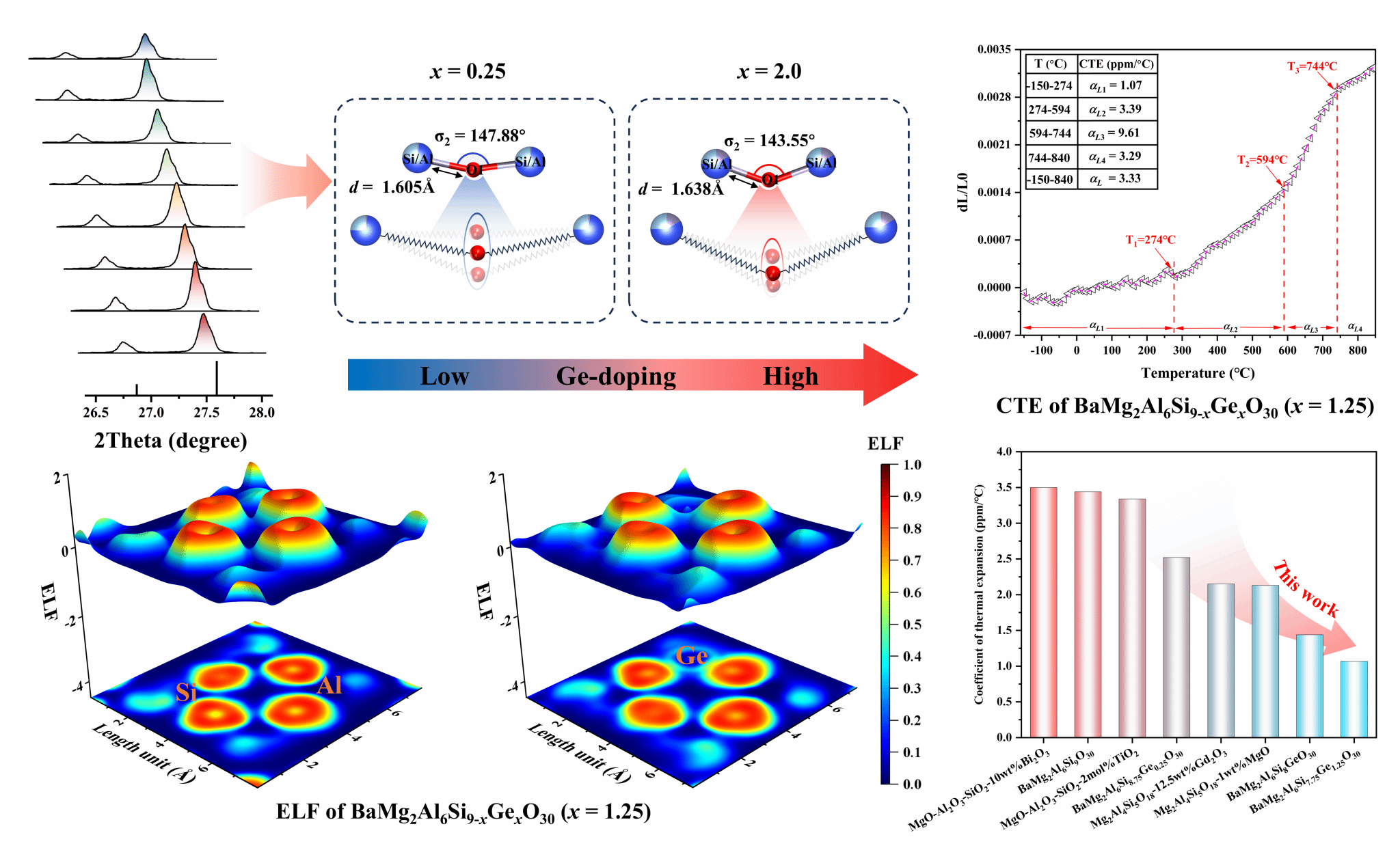Recently, Associate Professor Du Kang from Professor Wang Shengxiang’s research group at the School of Electronics, Wuhan Textile University, has achieved significant progress in the field of microwave dielectric materials and devices. The study entitled "Achieving Ultra-low Thermal Expansion and Excellent Microwave Dielectric Properties in Osumilite-type BaMg₂Al₆Si₉₋ₓGeₓO₃₀ Ceramics" was published in Journal of Advanced Ceramics, a leading international journal in the ceramics field ranked in the top tier of the Chinese Academy of Sciences’ journal classification (SCI Zone 1 Top) (https://doi.org/10.26599/JAC.2025.9221146). Li Chengyun, a master’s student majoring in Electronic Information at Wuhan Textile University (Class of 2023), is the first author of the paper. Associate Professor Du Kang, Professor Wang Shengxiang from Wuhan Textile University, and Dr. Lei Wen from Huazhong University of Science and Technology are listed as co-corresponding authors.

The advancement of communication technologies toward millimeter-wave and terahertz frequency bands imposes stringent requirements on microwave dielectric ceramics used in key components such as dielectric resonators, filters, duplexers, and substrates. These materials must exhibit ultra-low relative permittivity (εr ≤ 6), high quality factor (Q×f), and near-zero temperature coefficient of resonant frequency (τf). In particular, for integrated circuit packaging substrates, thermal expansion compatibility with silicon chips is critical. Therefore, microwave dielectric ceramics are expected to possess an exceptionally low coefficient of thermal expansion (CTE) to mitigate thermal mismatch-induced stress during device operation. However, most existing low-permittivity microwave dielectric ceramics exhibit large negative τf values (approximately –60.0 ppm/°C) and relatively high CTEs (around 10 ppm/°C), which are poorly matched with the CTE of silicon (~3.2 ppm/°C). While second-phase modifiers can be introduced to tune τf and CTE, their incorporation typically leads to significant degradation of microwave dielectric performance. Consequently, achieving simultaneous optimization of ultra-low εr, high Q×f, near-zero τf, and ultra-low CTE remains a major challenge in current microwave dielectric ceramic systems.

To address the aforementioned challenges, the research team focused on osumilite-type BaMg₂Al₆Si₉O₃₀-based ceramics featuring a [Si/AlO₄] tetrahedral six-membered ring structure. They proposed a polyhedron coupling strategy, designing targeted structural optimization at specific crystallographic sites. By tailoring the intrinsic crystal structure of the material, the team successfully achieved simultaneous optimization of ultra-low relative permittivity (εr), high quality factor (Q×f), near-zero temperature coefficient of resonant frequency (τf), and ultra-low thermal expansion in single-phase osumilite-type ceramics—overcoming a long-standing bottleneck in microwave dielectric materials where dielectric performance and thermal expansion are difficult to co-optimize. This work represents the first successful realization of dense BaMg₂Al₆Si₉₋ₓGeₓO₃₀ (x = 1.25) ceramics with integrated superior properties: εr = 5.84, Q×f = 32,351 GHz, τf = –7.27 ppm/°C, and CTE = +1.07 ppm/°C over a wide temperature range from –150 °C to +274 °C. The material exhibits exceptional dimensional stability due to its ultra-low thermal expansion across an extensive temperature window, setting a new record for dense low-permittivity microwave dielectrics while retaining outstanding microwave performance. These characteristics highlight its significant potential for applications in high-reliability integrated circuit packaging.

The Intelligent Materials and Devices Research Team, led by Professor Wang Shengxiang at the School of Microelectronics, is dedicated to advancing the science and application of functional materials and devices. In recent years, the team has published a series of high-impact research articles in internationally renowned journals, including Advanced Materials, Laser & Photonics Reviews, Journal of Advanced Ceramics, Applied Physics Letters, Journal of the European Ceramic Society, and ACS Applied Materials & Interfaces.
